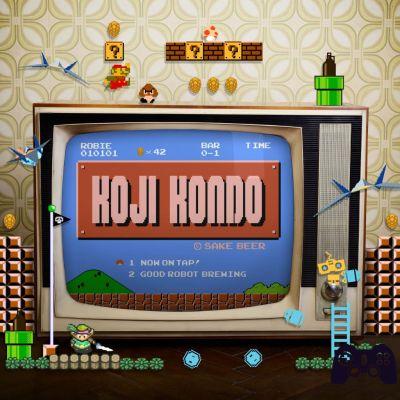
Hellblade: Senua's Sacrifice has already conquered critics and players in just two weeks. But the Ninja Theory masterpiece hides more under the surface than you think, in an incredible dialogue between artistic elements and cultural references.
Few cases have had such an interesting media coverage, in the videogame landscape and associated journalism. On August 8th, exclusively for PlayStation 4 e PC, Ninja Theory released Hellblade: Senua's Sacrifice, a splendid rare gem that we have already had the opportunity to praise in our review. Even then, the good Pietro had made some scattered references to the beauty and cultural depth of Senua's journey, defined by him at the same time as "Dante Alighieri and Virgil“; and not by chance.
Ninja Theory's masterpiece (because calling it less than a masterpiece would be an insult to its artistic dignity) is a true videogame work of art, and hides far more beneath the surface than meets the eye. Narrative techniques more typical of cinema than videogames, continuous references to Germanic culture e a strong aesthetic and identity research these are just some of the highlights of Hellblade, which, as many will know by now, tells of Senua's journey to “hell” in search of her beloved.
Similar to Senua's, we like to think of this article as a "journey beneath the surface of his adventure“, In order to dissect all the most interesting features of a game destined to be a model for many years to come.
Watch out for spoilers scattered throughout the article, and let's get started right away.
This article is part of the cycle "Ars Ludica“, Which aims to search for the artistic components in some of the most representative video games. Those who already think that video games can be an art form will probably find strong confirmation in the course of this article; for those who strongly believe that they are not, the invitation is to continue reading. Because there is no more beautiful art than what appears to the eyes of those who know how to admire it.
If you are curious about our analysis methodologies, take a look at the following links: Introduction to Ars Ludica; complements.
The Hellblade Narrative
Sound Design and cinematographic techniques are the masters in Hellblade
It is not possible to speak of Hellblade without referring to his own narrative techniques, undoubtedly artistic and useful elements for the composition of the whole. We have already talked about how the sound design of the title is fundamental for the unfolding of the story, but here it is worth taking it back to "open the dance": Hellblade is half as enjoyable without a good pair of headphones, preferably with 3D positional audio. This is because, as stated by Ninja Theory itself at the opening of the game, the developers have relied on a team of expert psychologists and psychiatrists to better represent some forms of psychosis, psychosis that Senua herself seems to be suffering from. These disorders, we have already said, manifest themselves in the form of hallucinations, disturbed memories, but above all like voices in Senua's head, which will continually ring in our ears throughout the game. With this gimmick, Hellblade perfectly blends audio and gameplay, guaranteeing an immersive experience like few (or none) and always keeping the player's senses alert; a great way, in short, to "narrate" through total immersion. And, thanks to a dubbing (if you pass the term) of the Madonna, the more "advanced" connoisseurs of the English language will be able to fully appreciate the game experience, listening to the suggestions of the voices and identifying as much as possible in the discomforts of Senua.
In this way, Hellblade achieves a goal that is simple to understand, but never quite as simple to achieve: “Playing” with the linguistic means provided by the videogame, it builds its own shape and aesthetic identity, in which the gameplay and sound sector are in constant dialogue almost as much as they are with the more purely visual part. Not infrequently, in fact, it happens that, during the fighting with the sword, the voices warn Senua of an impending attack behind him; only the most attentive, immersed player with the fastest reflexes can grasp the hint, effectively becoming part of the game itself.

But Hellblade certainly does not stop there, and takes full inspiration from the language of cinema: the initial crossing in a canoe is a splendid sequence shot that blends images and opening credits, and there isn't a single edit cut before the player actually starts controlling Senua. Not only that: in most of the flashbacks, the camera never shows the reverse shot, stimulating the curiosity of the player who would like to see the actual manifestations of the protagonist's memories. In other words, Senua is almost always in the center of the screen, turning her intense gaze into the car and demonstrating a splendid acting by the actress chosen for the motion capture, Melina Juergens; but, in doing so, the game it (almost) never shows what Senua is looking at during the recollections, making her the one, true "human" character in the game. And finally, the fights are managed with a semi-subjective firmly planted behind Senua, who always follows her eyes without ever getting distracted for a moment.
In short, a lot of stuff without a shadow of a doubt. And we have only begun to scratch the surface.
Germanic Culture: Runes and Runestones
Senua is immersed in a dark and disturbing game world. The level-design, although particularly linear, is characterized by an incredible attention to detail, a care that indisputably gives life and soul to the Hellblade universe. At first glance, it may seem that the artistic sector is simply the result of an art-designer with great creative abilities, who has simply rebuilt everything from scratch starting from his mind; if, on the one hand, this is absolutely true, the influence of external elements in the construction of the game world should not be underestimated: the Germanic culture (and, as we will see shortly, also a bit of history) is always present within Hellblade, hidden around the corner but evident to any glance from an experienced man. References to Norse mythology are everywhere (and we'll get to those too), but it all starts with the most mundane thing in the world: the alphabet.

Complete representation of the ancient Fuþark, the first runic series of Germanic culture, with transliteration of the runes in phonetic signs.
Someone may have exchanged the various engravings and runes of Hellblade for simple decorations, or even just for the graphic signs created by the developers themselves. The truth, however, is quite different: in Germanic (and, above all, Scandinavian) culture, Runes were a form of engraved writing used by the barbarian peoples (also called "Germanic", since they were composed of the "Germans" identified by Tacitus and Caesar) during the barbarian invasions, between the second and eighth centuries. Runic inscriptions were engraved with sharp tools on weapons, stones, accessories, everyday objects and many other artifacts of the barbarian culture; but their most curious aspect was the magical power of which (according to Scandinavian culture) they were gifted, a power characteristic of each runic sign. When combined, the Runes could invoke the influence of the gods on the earth, guaranteeing wealth and prosperity, fertility or even just success in battle. For this reason, every single Rune had a different meaning, and corresponded to a different word of the Germanic dialect.
Some examples: the “fehu” rune (the first in the series above) was associated with wealth and cattle; the rune “thurisaz” (the third) was associated with the god Thor and the giant Jötunn and so on. The first puzzle faced by Senua throughout the game is a runic gate, engraved with the Rune "mannaz" ("Man", the fourth of the third line), which is generally associated with the virtues of the intellect; and the player will actually have to exercise his intellect and his deductive skills to find the solution to the enigma, hidden in the environment and in the shadows. At this point, you are probably already starting to understand how much work there is behind this splendid production of Ninja Theory.

It will not be the only case in which the Runes, engraved on the gates that block the road to Senua, will hide some secret meaning. A careful look (thanks, Photo Mode) will also allow you to notice these inscriptions on the enemy's weapons, even if in those cases the Runes seem to be associated in a much more arbitrary and less studied way (perhaps for simple decorative purposes).
And not only on gates or weapons: the Runes are also used, in a particularly silent and almost invisible way, as a real narrative medium. During his journey, Senua will be able to find the so-called "Lorestones" in the form of collectibles, engraved runestones that, if identified, will allow you to hear a story of Druth on the Nordic culture of the Germanic peoples. The fact is that the runic series that makes up the Rune circle of each Lorestone (below) it can be easily transcribed into the Latin alphabet, composing a well-defined English writing (SPOILER AHEAD: skip to the next paragraph if you don't want bad surprises).

Transliteration: “Seek Hela's truth in mirror. Gods betray us. Unmask fear. "
The writing is literally "read" by the voices in Senua's head just before the finale, as long as you have found all the runestones scattered around the game. Those who have already played and finished Senua's adventure will know that the writing is tremendously spoiler for the ending: "Seek Hela's truth in mirror”Is an evident reference to the true identity of the goddess of the underworld, a personification of the unconscious and of the deepest fears of Senua herself - and, therefore, of Senua herself. And it's a revelation hidden right there, under our noses, in an alphabet that many of us can't even understand. Pure genius, especially if you think that this writing hides a simple mechanic: each word corresponds to a different level of the game, also indicating how many collectibles we are missing before completing that level 100%.
And some of those runes are not even random: the rune "Áss" (associated with the gods and, more generally, with "revelation"), in the second word, will start a story of Druth that will refer to the "creation of the world" , the prophecy of the seer contained in the song of the Voluspá - but let's not rush: we will soon reach the Norse culture.
It is certain that these Lorestones often have very specific references in the Germanic tradition. The one in the image above, for example (with inscriptions on the surface which, at first glance, appear to be in true Gemanic dialect), can easily be associated with real runestones, discovered by archaeologists and historians in the territories where the culture of the Germans was dominant.







